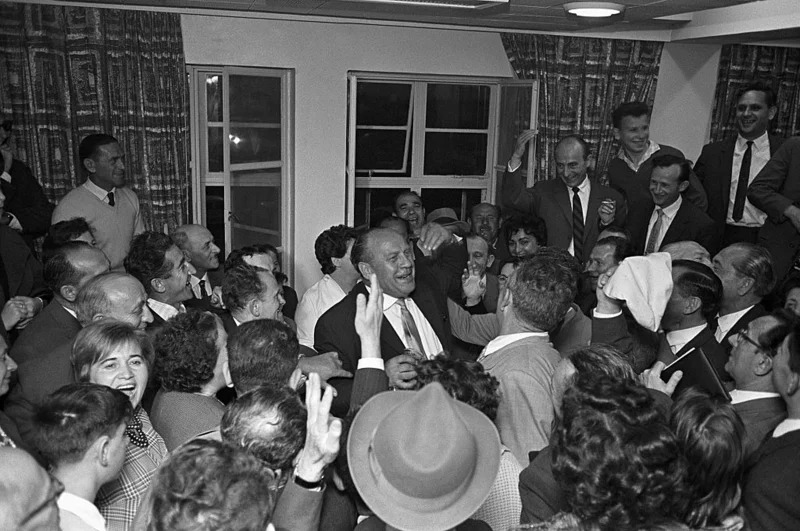The movie is about a serious topic – the holocaust. It is in black and white and was made in 1993. And to top it all, the movie is 3.15 hr. long. In the current generation of reels, these points are enough for anyone to put off this movie.
And maybe because of some of these points, I had also not watched this movie until last Sunday.
Ironically, I felt like watching this movie was because of a few reels that I saw. One particular reel I clearly remember. I saw Liam Neeson deliver a monologue. I knew Liam Neeson from famous movies such as Taken or even his part from Star Wars. He has that Northern Irish accent and a certain calmness in his eyes which made me listen to him carefully. He was asking the German soldiers, “Here are Jews. Either you can kill them and execute your orders or go back home as men and not as murderers.”
Before I proceed, I have to make a confession. I love WWII movies. I am fascinated by that period of history. On one hand, you have the holocaust and on the other hand, you have the detonation of the atomic bomb. Probably the darkest chapter of human history and prevailed by so many inspiring stories of human grit.
So naturally I got attracted to this particular character. Those words left a deep mark on my mind. Which is this movie? What transpired for this character to challenge the soldiers in this manner? And with a few clicks of a button, I understood it was the “Schindler’s list”.
Yawak… Another of those holocaust movies… graphic version of the atrocities on Jews…
Was my first reaction too but how wrong was I? When I started to do a bit of research on this movie, I realized it perfectly fits into my types of “inspiring stories from WWII”. That was it. I found where the movie was available and without looking into anything I started watching it.
Now, I do want you to take 3.15 hours of your life to watch this movie so I won’t spill a lot of the beans. This post is to express why this movie hit me harder than some of the other inspiring movies I saw of WWII.
First, the events-
We have an unlikely hero in Oskar Schindler, a flamboyant, friendly, “the-world-can-do-me no-harm” attitude, loved living it large sort of a businessman. A point to be noted is that he was a German, a Nazi party member. He loved to make connections and he loved people. He cast spells on anyone he met. He wanted to do anything to make his business successful. As the atrocities on Jews increased, how “human” inside him rose to the occasion. What he did were the most obvious things but to do the most obvious things in those circumstances, was nothing but inspiring. In the eyes of Jews, he was a savior but he vehemently denied that label. Any request to save a Jew came to him, he would deny it only to ensure the Jew is saved behind the curtains. He didn’t fight the German govt or stir a rebellion, all he wanted to save was his friends and he ensured, his friend list was always growing. And in the latter half of the movie, we get to see what risks Oskar took to achieve this mission.
On the other hand, we have Itzhak Stern, a determined Jew leader. He knew what position he was in. He was the orchestrator behind the scenes to nudge Oskar in the right direction. He ensured, that his efficient ways of working not only helped Oskar in business but also in saving Jews. He was routinely letting Oskar know the ground realities of Jews in Poland. Probably he was the one, who called out the human inside Oskar. He transformed a businessman into the most nobleman in the world.
Second, the actors.
The actors who brought the stories alive. They not only acted their parts to perfection but took us back to that period. Of course, the man behind the camera was also important- Steven Spielberg. He made a movie of 3.15 hours, worth every minute. Oskar watering the trains or Oskar talking to Helen the first meeting between Oskar and Itzhak, or the ruthlessness of Amon Goeth’s character, or the red-dressed girl in the black and white movie, I can go on and on. Some of these iconic shots will always remain with the audience.

Be those long shots or the silent gazing shots, the perfect use of the background music, or the decision to have the movie in black and white, all felt perfectly accompanying the story and not overpowering it. The one little girl in red color dress shown in only 2 scenes, can never be forgotten.
When the story ended, while crying, I had an intense feeling to see both of these gentlemen. The movie ends with a scene where real survivors, fondly called Schindler’s Jews gather to pay their homage on the grave of Oskar Schindler. I tried to find Itzhak in that crowd but sadly only his widow appeared on the screen.

